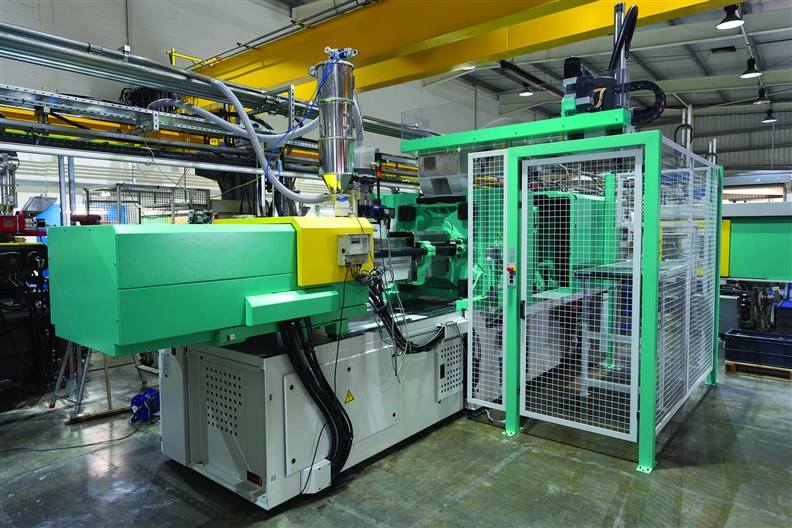Field tests made with hydraulic fluids formulated to Evonik’s DYNAVIS® performance standard reveal significant gains in terms of energy efficiency and productivity. The technology is based upon specially designed polymeric additives designated as viscosity index improvers (VII).
Dr. Holger Pletsch
Modern hydraulic systems must perform in difficult environments under high cost and time pressure. Improving the productivity – and therefore, the cost efficiency – is one of the main targets of owners of hydraulic equipment. Hydraulic fluids formulated to Evonik’s DYNAVIS® performance standard improve hydraulic pump operation in several substantial and measurable ways, providing a significant productivity increase and, in turn, cost savings.
Both fleet owners of mobile hydraulic equipment such as excavators, cranes or wheeled loaders and operators of stationary hydraulic equipment such as injection molding machines or hydraulic presses can benefit from an oil change.
Based on years of intensive R&D and meticulously designed field tests, hydraulic equipment operating with DYNAVIS®-formulated fluids have credibly demonstrated their potential to achieve:
- Up to 30 percent more hydraulic power under full-load conditions
- Up to 30 percent lower energy (fuel or electricity) consumption to complete the same amount of work
- Faster response to operator control
- Highest hardware protection standards
In the following, the relationship between hydraulic efficiency and fluid design is discussed and a technical background of DYNAVIS® technology is provided:
Viscosity as the key parameter for energy-efficient hydraulic fluids
Hydraulic efficiency is closely linked to the viscosity of the hydraulic fluid. An optimized balance between volumetric efficiency (low internal and external pump leakages) and hydromechanical efficiency (low hydrodynamic friction and churning losses) is required to maximize the overall pump efficiency.
Standard monograde hydraulic fluids with low viscosity indexes (VI), i.e. with a strong dependency of viscosity on temperature, are not able to maintain the optimum viscosity range over the system’s temperature operating window (TOW). For example, a monograde fluid will dramatically increase in viscosity during cold operating conditions and will experience flow problems during start-up, as well as the following problems during operation:
- Air entrainment
- Noisy operation
- Sluggish response
- Energy loss
- In extreme cases, pump breakdown
On the other hand, when the fluid viscosity is too low during warm operating conditions, other problems will occur:
- High wear rates due to inadequate oil film thickness
- Excessive internal and external leakages, leading to a loss of system efficiency
- Overheating due to energy loss from internal pump leakage. This heat further increases the oil temperature leading to further viscosity reduction, increased internal pump leakage and accelerated heat generation and fluid degradation.
In order to protect the hydraulic equipment and to ensure optimized pump efficiency during different stages of operation, a fluid capable of maintaining an optimal viscosity level over a wide TOW is required. Evonik’s DYNAVIS® formulated fluids are multigrade fluids with VIs of 160 or higher, i.e. with a low dependency of viscosity on temperature.

The technology behind DYNAVIS®
The technology behind DYNAVIS®-formulated fluids with high VIs is based upon specially designed polymeric additives designated as viscosity index improvers (VII). The most efficient VIIs are composed of various types of methacrylic esters with different alcohol chain lengths and are called “polymethacrylates” or simply PMAs. The preferred molecular structure greatly depends on the application requirement and can be adjusted to fine-tune oil solubility and low-temperature performance. Summarized under the name VISCOPLEX®, a variety of PMA VIIs are available from Evonik to formulate fluids meeting the DYNAVIS® performance standard.
To understand the VII mechanism, it is important to know that polymers dissolved in a solvent, such as in hydraulic fluid, adopt nanoscale-solvated coil structures, having an ellipsoid or spherical shape, known as hydrodynamic spheres. These spheres increase the fluid resistance to moving (= viscosity) as they increase the friction forces between the internal fluid layers. The greater the expansion in the size of the coil, the stronger the sum of its intermolecular forces, and the higher the viscosity of the hydraulic fluid. The size of the hydrodynamic spheres depends on many parameters, such as their affinity for the oil matrix, the polymer chain length, structure and composition, the shear rate prevailing in the fluid and the fluid temperature and pressure. Whereas many of these parameters are fixed by the fluid formulation, temperature is the one dominating parameter affecting the viscosity of the fluid while the hydraulic system is in operation.
As a matter of fact, advances in hydraulic system technology have led to an increase in operating pressure and power density. This results in a high fluid pressure gradient across the solvated polymer hydrodynamic volume that can result in “shear” distortion or breakage of the VII polymer coils. “Shear” manifests itself as a reduction in the fluid viscosity and can be either temporary or permanent.
Distortion of the VII polymer hydrodynamic volume is reversible and causes a temporary viscosity reduction. When shearing is stopped, the fluid viscosity immediately recovers. However, stronger shearing forces can cause breakage of chemical bonds, leading to a permanent viscosity reduction of the fluid. This reduction in viscosity due to shear leads to a decreased TOW, an increased likelihood of wear and to reduced efficiency.
Measuring the tendency of a hydraulic fluid to lose viscosity on shearing is an important indicator of the fluids fit for purpose. Polymer shear stability is indicated by the permanent shear stability index (PSSI). It represents the percentage of viscosity lost by a fresh fluid after shearing. The lower the index, the more shear stable the VII. A highly shear-stable VII such as VISCOPLEX® is essential to guarantee high overall efficiency and protection in the field over time.
In conclusion, high shear stability and high VI are the key parameters for energy-efficient hydraulic fluids. DYNAVIS® formulated fluids are meeting these high performance standards. In various field trials, both with stationary and with mobile hydraulic equipment, DYNAVIS® formulations offer significant gain in per hour productivity and energy (fuel or electricity) savings for equal work.

















